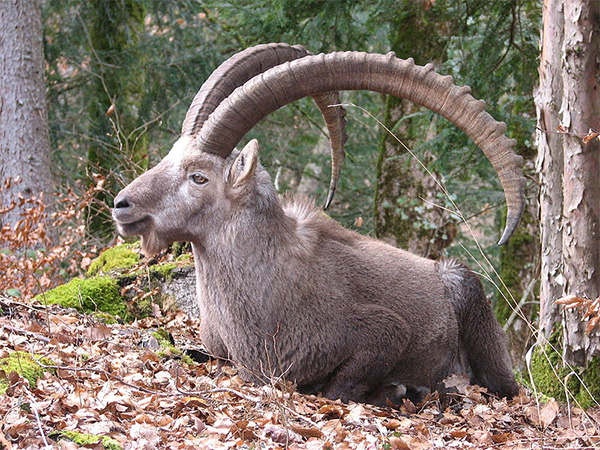Adventure Planner
Alpine Ibex

The Alpine ibex (Capra ibex), also known as the steinbock or bouquetin, is a species of wild goat that lives in the mountains of the European Alps. The coat colour is typically brownish grey. Alpine ibex tend to live in steep, rough terrain above the snow line. They are also social, although adult males and females segregate for most of the year, coming together only to mate. During the breeding season, males fight for access to females and use their long horns.
After being extirpated from most areas by the 19th century, the Alpine ibex was reintroduced to parts of its historical range and all individuals living today descend from the stock in Gran Paradiso National Park in northwest Italy and from the neighbouring French valley of Maurienne.
Compared with other members of its genus, the Alpine ibex has a short, broad head and a duller coat. It has brownish grey hair over most of the body, a pale abdomen and slightly darker markings on the chin and throat and in a stripe along the back. They moult twice a year, firstly in April or May, and then again in September, when they replace the short summer coat with thicker hair and a woolly undercoat.
Males commonly grow to a height of 35 to 40 inches at the withers, with a body length of 59 to 67 inches and weigh from 148 to 258 pounds. Females are noticeably smaller. Both male and female Alpine ibexes have large, backwards-curving, horns with numerous ridges along their length, but those of the males are substantially larger than those of females.
An excellent climber, its preferred habitat is the rocky region along the snow line above alpine forests, where it occupies steep, rough terrain at elevations of 5,900 to 10,800 feet. Alpine ibex are typically absent from woodland areas, although adult males in densely populated areas may stay in larch and mixed larch-spruce woodland if there is no snow. Males spend the winter in coniferous forests and use lowland meadows during the spring. They then climb to alpine meadows during the summer. They prefer slopes of 30–45° and use small caves and overhangs for shelter.
